In teams of two, a pilot and an observer fly in designated survey areas looking for brown bears. When animals are found, the observer snaps a photo and records the GPS location of the group. After all survey areas are completed and photos are compared with other teams, the researchers can estimate how many individual bears live in the park. If you’re interested in reading more about why the NPS uses aerial surveys for this project, check out this article from NPS Biological Science Technician, Sara Germain.
Spring in the Arctic is a time for new life and regrowth. After the snow begins to melt, tundra plants become more and more green. Brown bears emerge from their dens—many being females with an extra mouth (or two) to feed. Baby moose and caribou are born, too! Although researchers aim to find and photograph brown bears, they often see the other wildlife found in the park. On mountain ridges and open tundra in the Brooks Range, researchers have reported seeing brown bears, wolves, foxes, caribou, Dall’s sheep, moose, and wolverines. Keep reading to see photos of the animals that the researchers spotted from the sky!
 A bear family walks together across the tundra, between patches of snow. Photo by NPS/D. Vinson.
A bear family walks together across the tundra, between patches of snow. Photo by NPS/D. Vinson.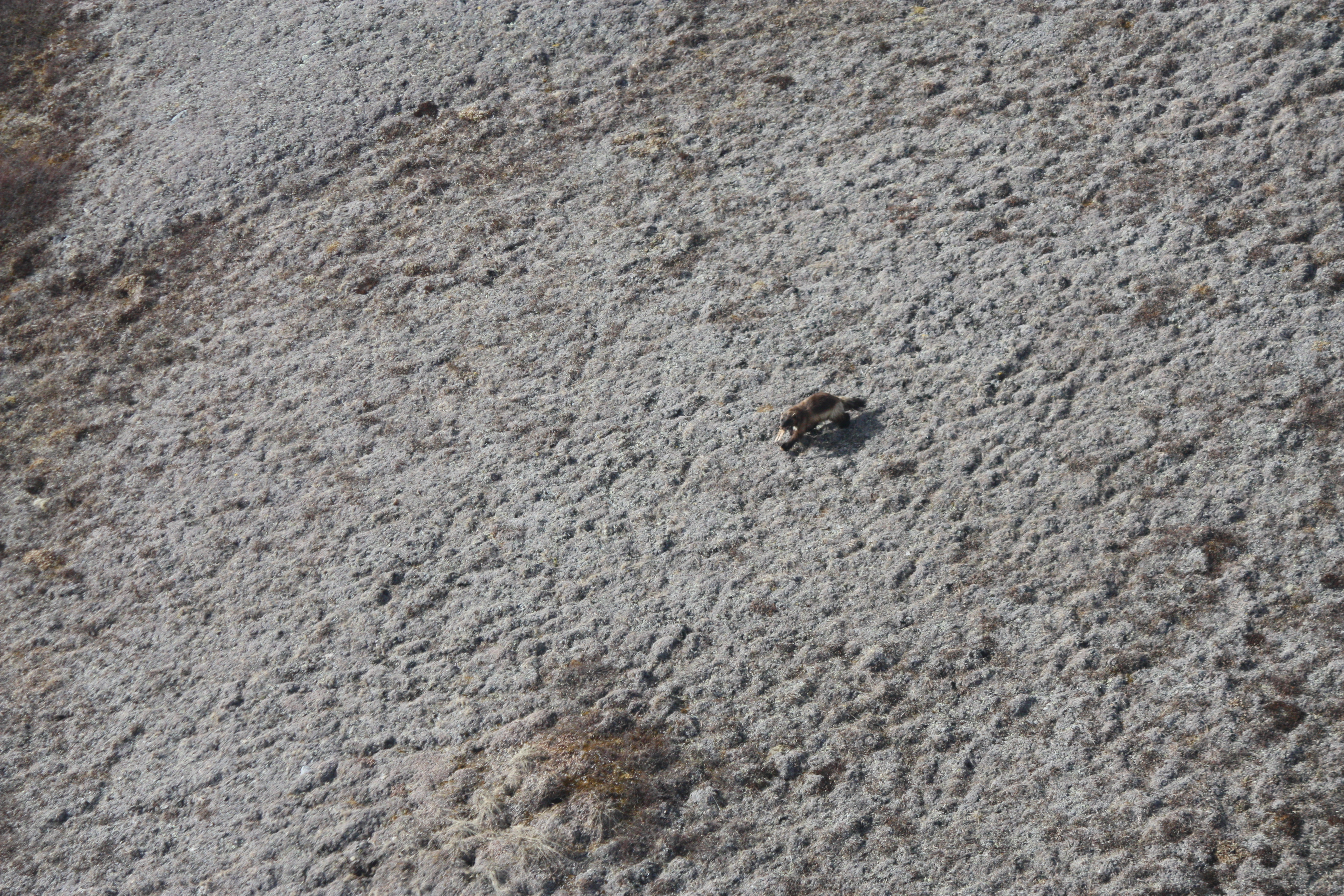 A wolverine darts across the tundra and frost carrying something in his mouth. Could it be a bone belonging to his prey? Photo by NPS/Raime Fronstin.
A wolverine darts across the tundra and frost carrying something in his mouth. Could it be a bone belonging to his prey? Photo by NPS/Raime Fronstin.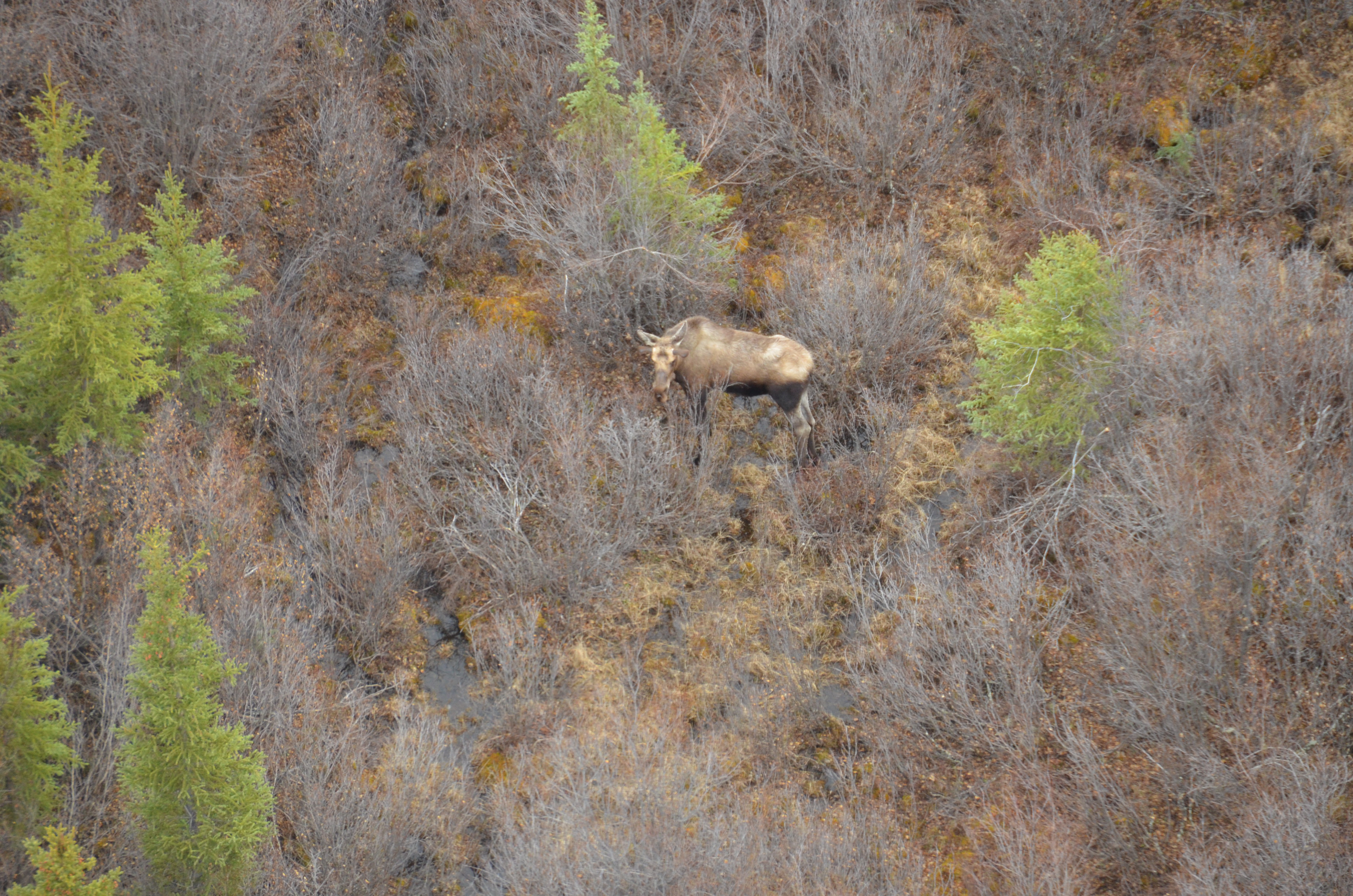
A moose stands in the brush and watches the plane fly by. Photo by NPS/D. Vinson.
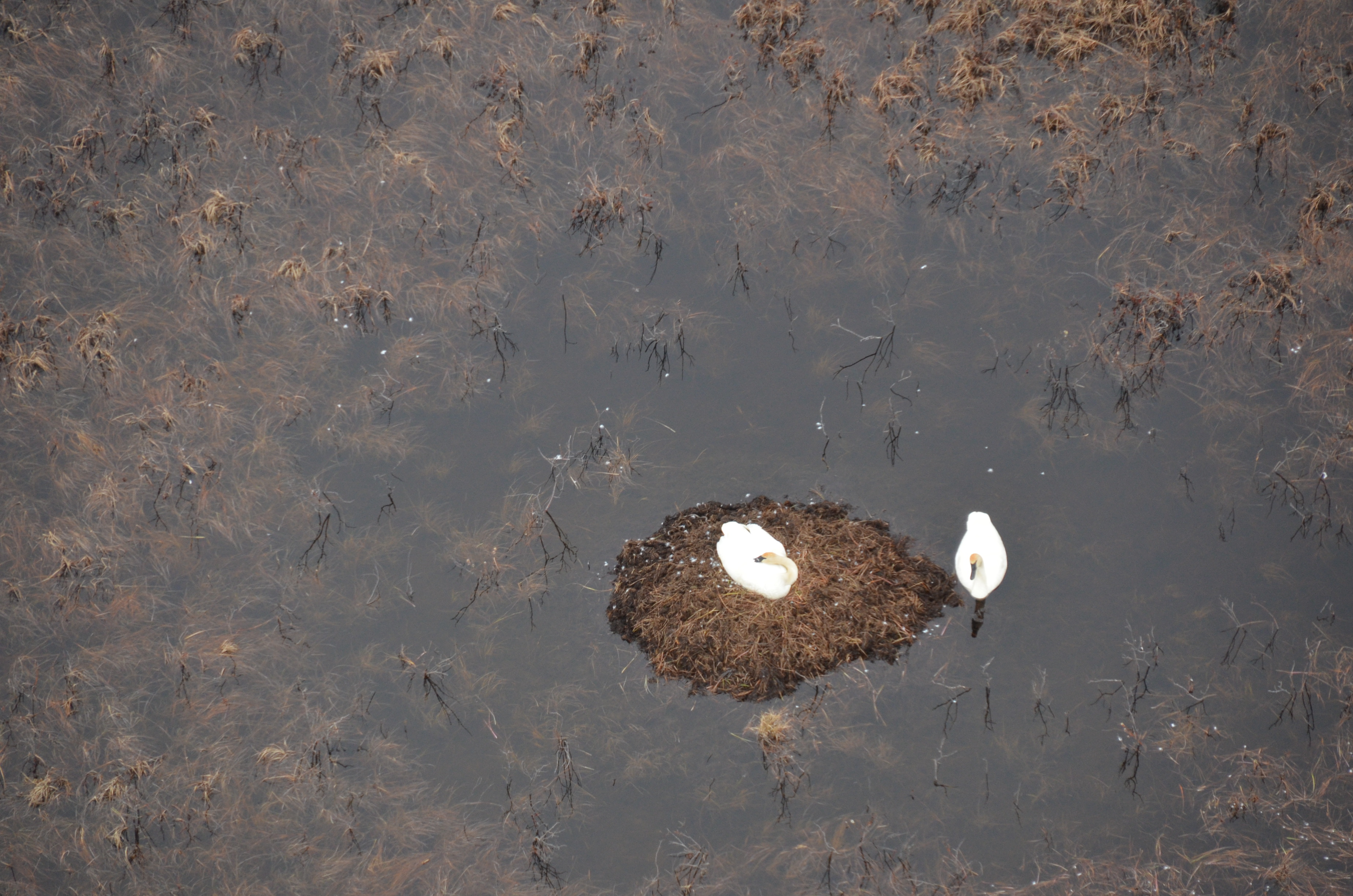 A pair of tundra swans nesting in a pond. Photo by NPS/D. Vinson.
A pair of tundra swans nesting in a pond. Photo by NPS/D. Vinson.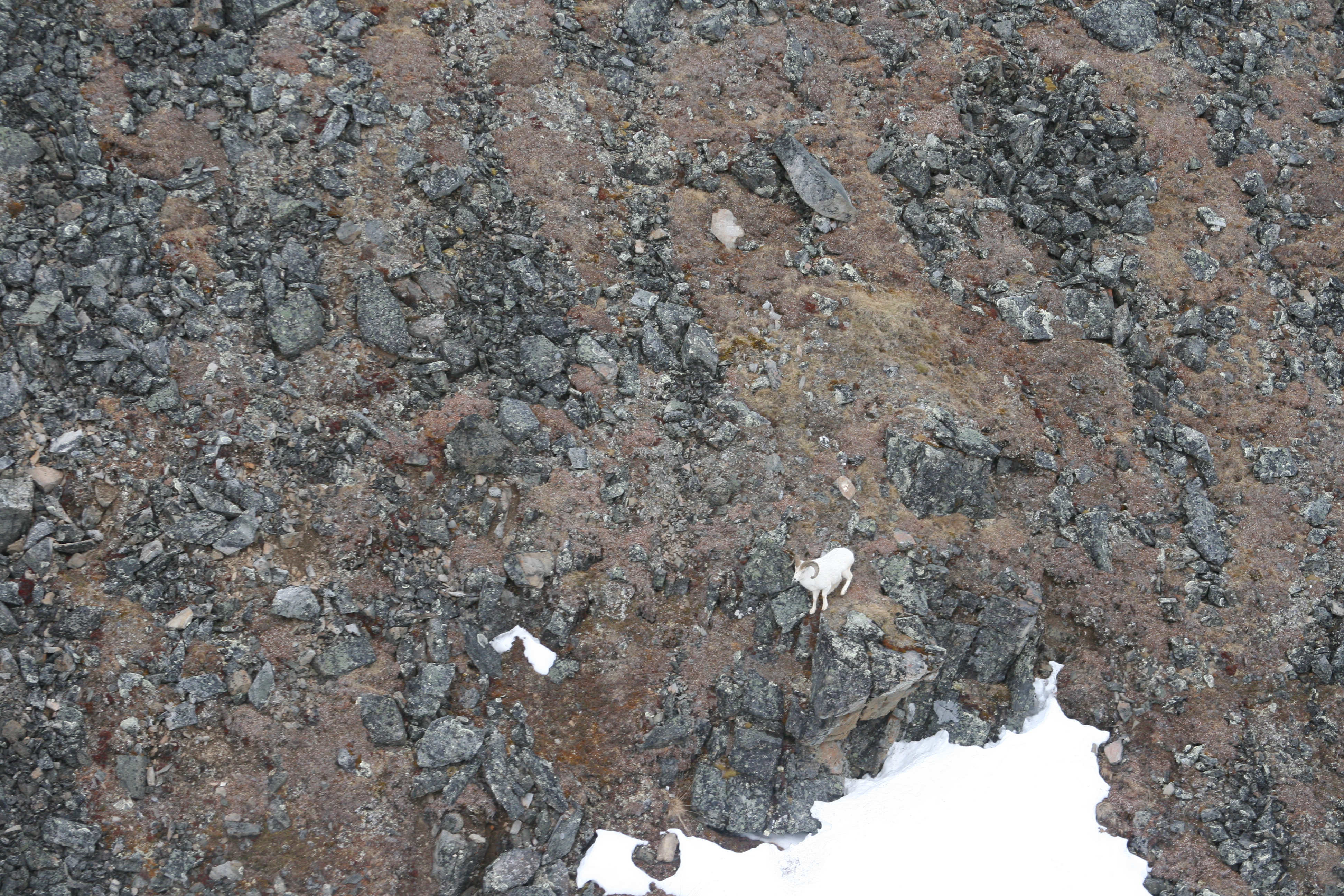 A Dall’s Sheep with impressive horns stands on a steep hill. Photo by NPS/D. Vinson.
A Dall’s Sheep with impressive horns stands on a steep hill. Photo by NPS/D. Vinson.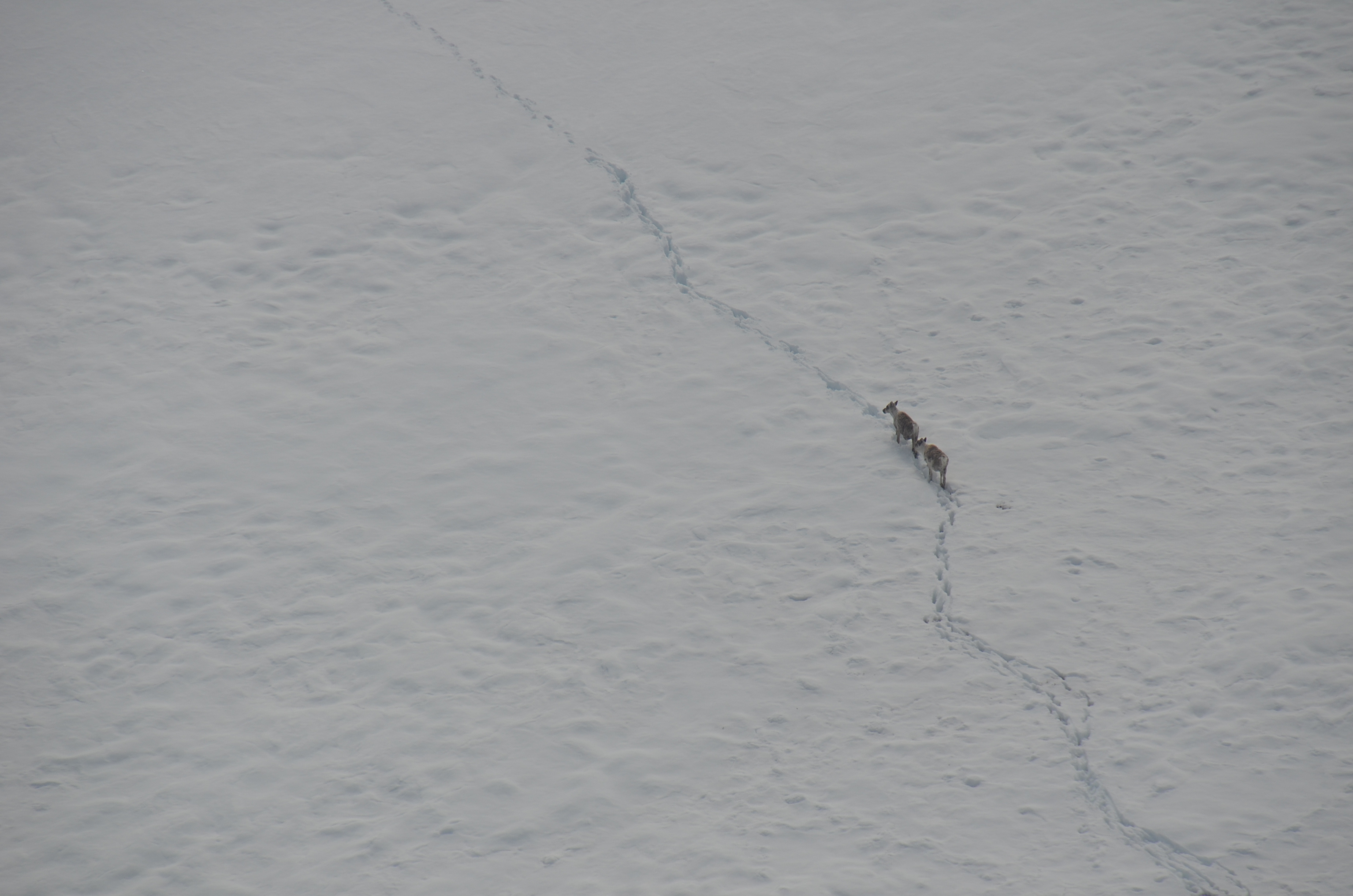 Two caribou follow a migration trail through the spring snow. Photo by NPS/D. Vinson.
Two caribou follow a migration trail through the spring snow. Photo by NPS/D. Vinson.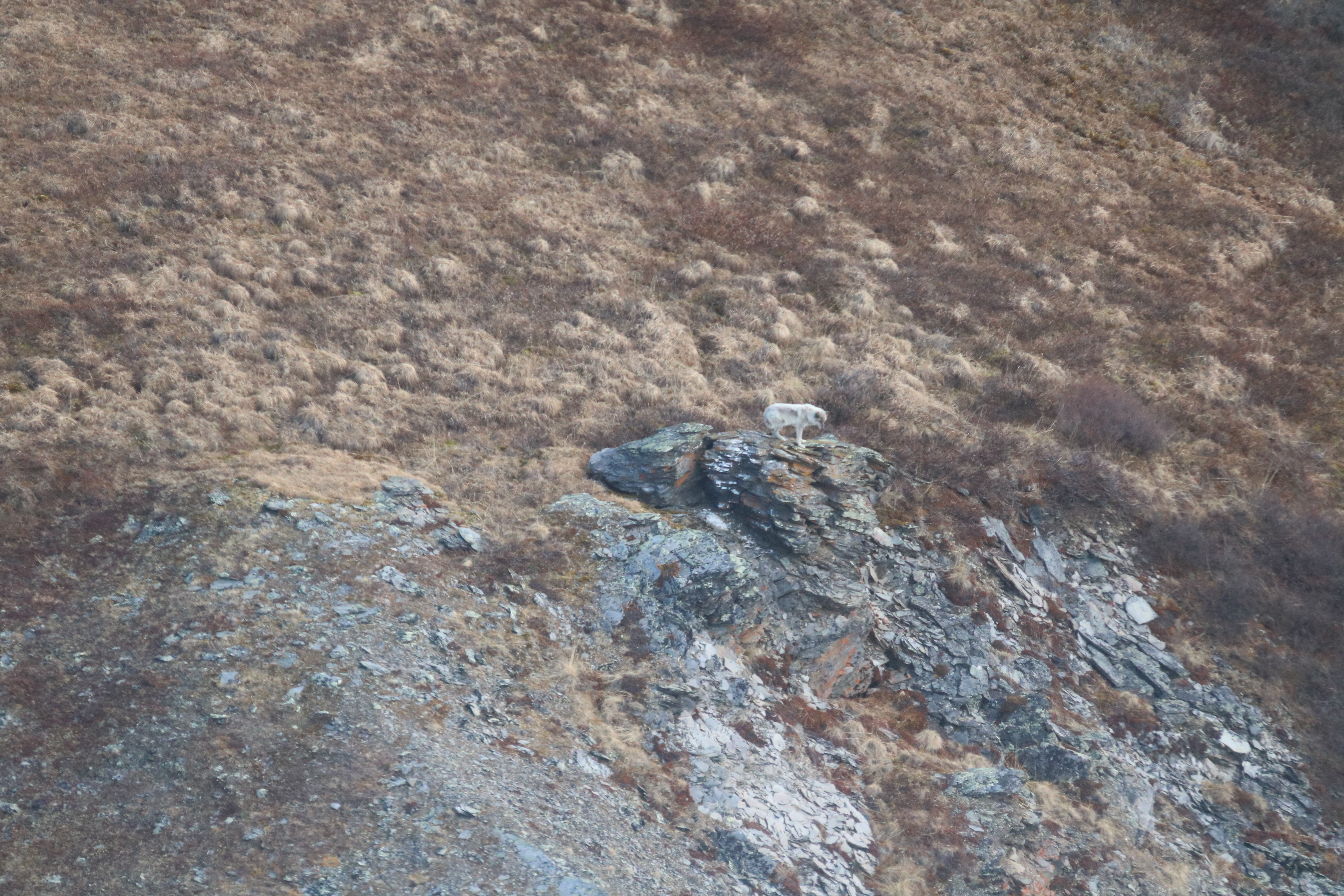 A wolf stands on a steep hillside in the tundra. Photo by NPS/Sara Germain
A wolf stands on a steep hillside in the tundra. Photo by NPS/Sara Germain Geese fly in the Brooks Range. Photo by NPS/D. Vinson
Geese fly in the Brooks Range. Photo by NPS/D. Vinson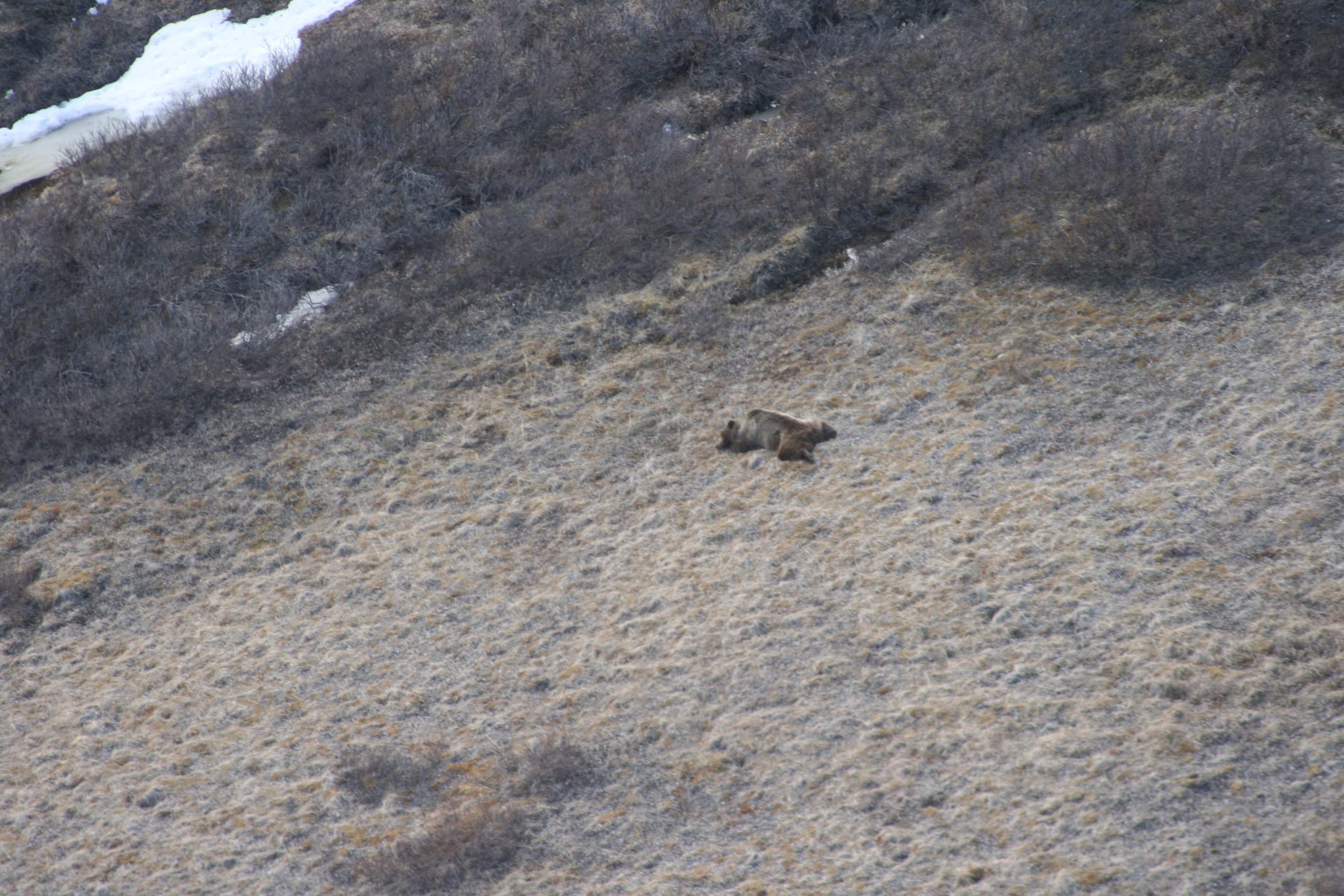 A bear snoozes in the tundra. Photo by NPS/M. Newton.
A bear snoozes in the tundra. Photo by NPS/M. Newton.